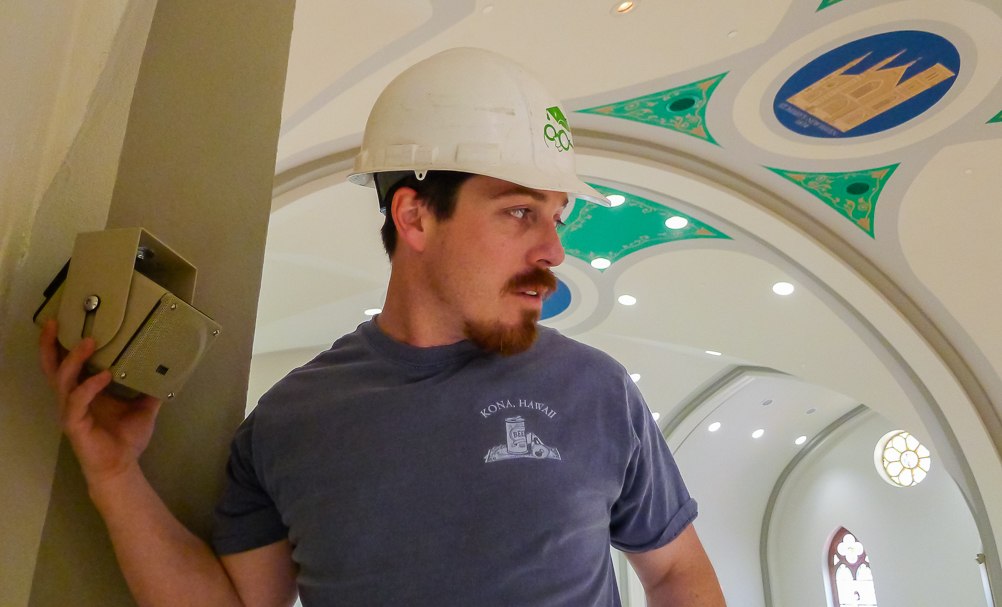
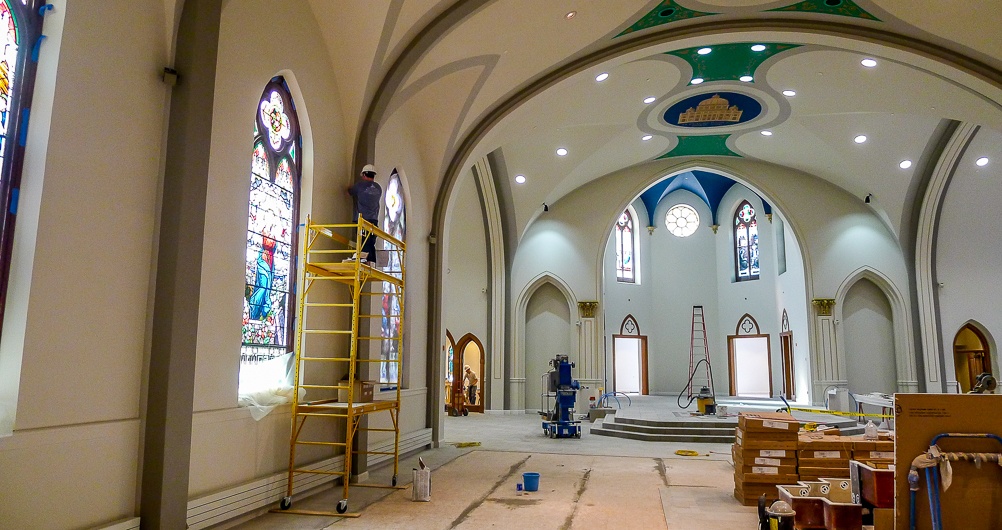

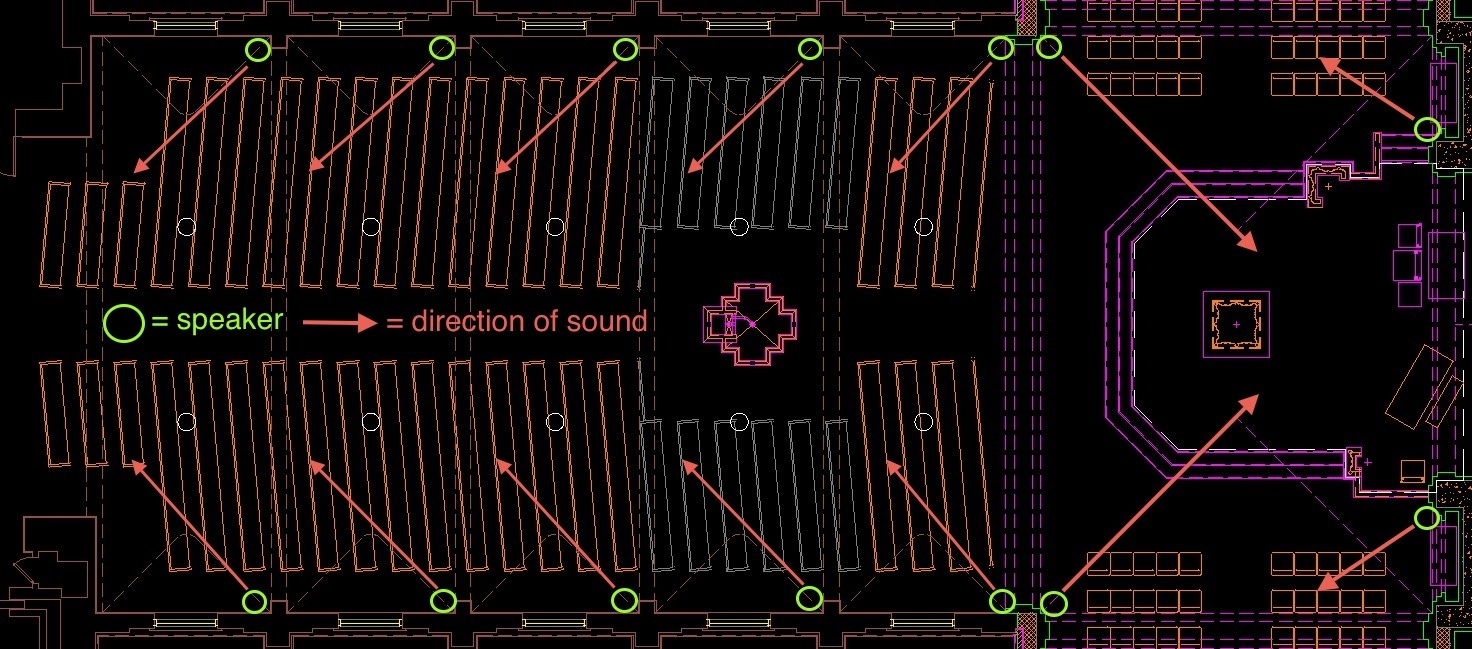
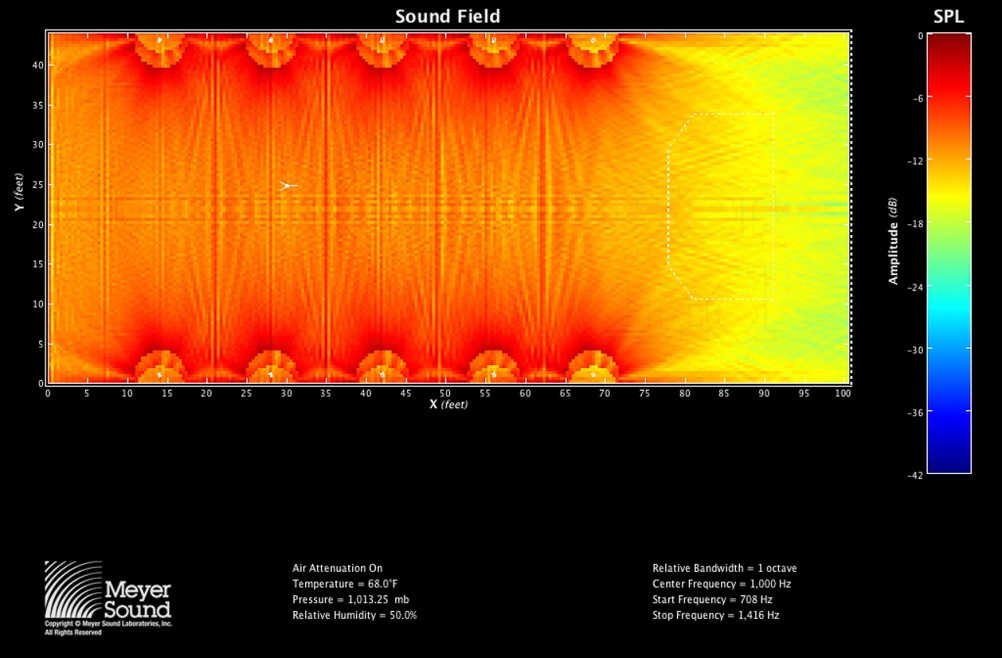
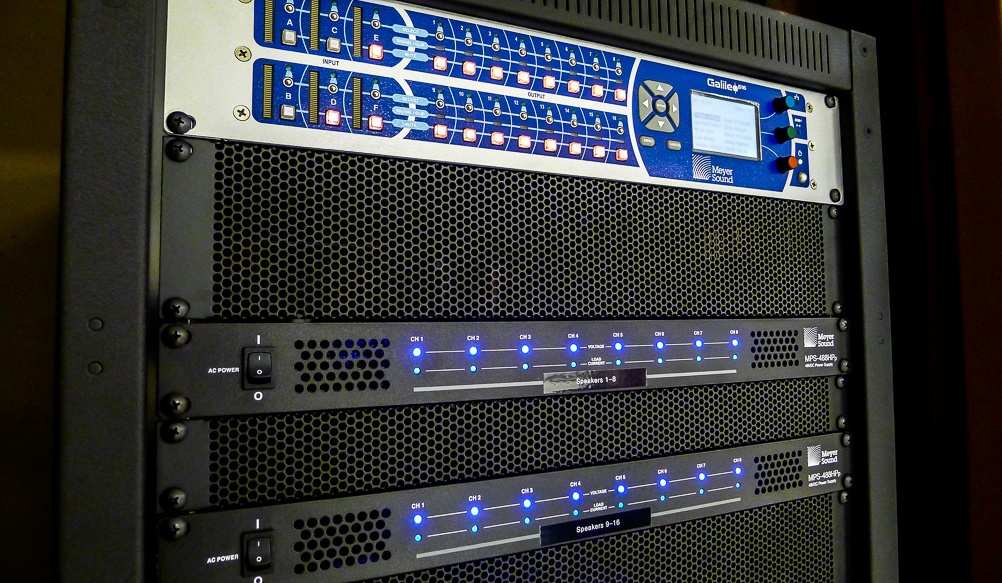
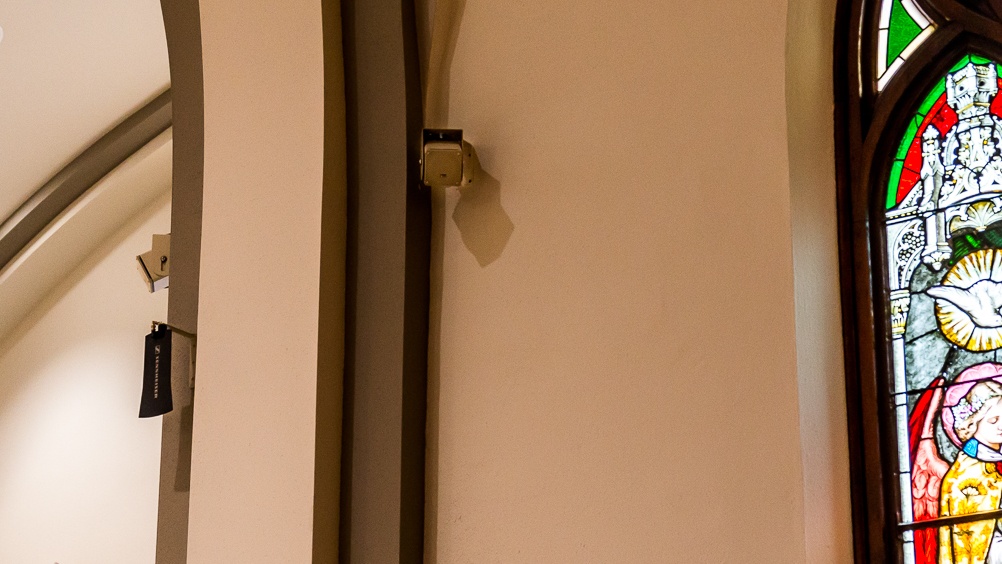
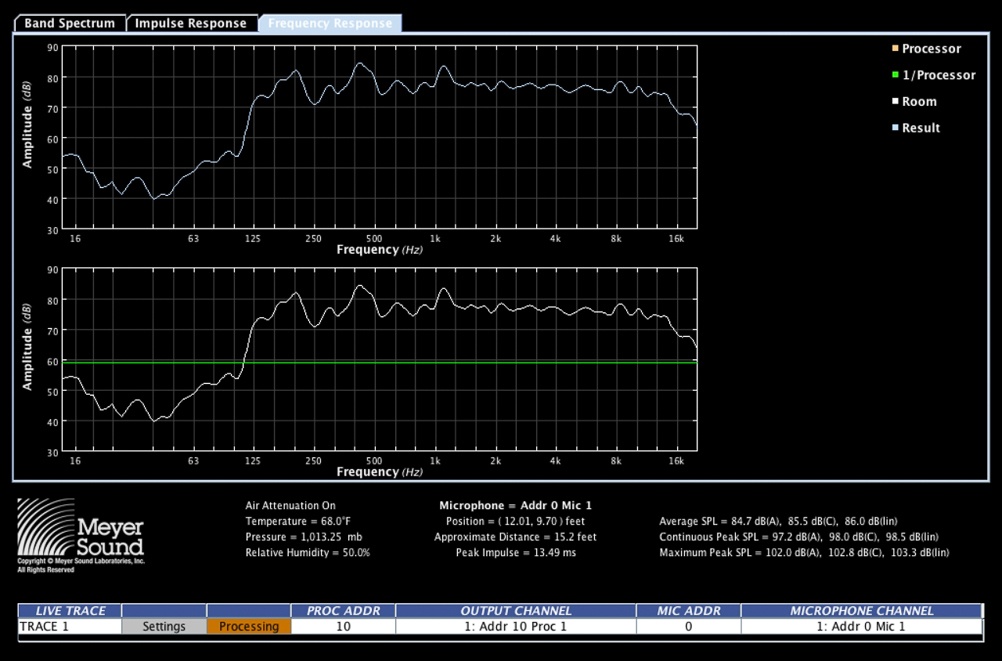
Holy Rosary Church Bozeman, Montana
We began designing the sound system for Bozeman’s Holy Rosary Church in 2011 with Father Leo’s input. We always aim to work directly with the end user, as this saves everyone time and sets a project up for success. Father Leo’s goal was to invest in a sound system that supported clear intelligible speech and, a system with a 20+ year life span. The reverb time within Holy Rosary’s sanctuary was measured at over 4 seconds, which is not good news for speech intelligibility. The sound system needed to integrate seamlessly within the architecture of the building, so hanging a cluster of speakers front and center was not an option as this area was reserved for a custom made crucifix.
Adding acoustic panels was a concern due to the building’s aesthetic and, in striving to retain the long reverb time for musical purposes. Holy Rosary’s large volume, it’s curved ceilings and walls, the highly reflective plaster, and tile surfaces were all great news for the Organist and Choir Director, but not for us in striving to deliver the spoken word clearly for all to understand.
Meyer Sound MM-4 Speakers
We needed a special speaker that we could mounted as near to listeners ears as possible. Meyer Sound had a new mini-speaker called the MM-4 debuting in 2012, it provided us with enough sound output power, frequency response and directivity that we felt we could cover the entire church effectively with a “zoned system”. Each speaker was custom painted to match the plaster wall color within the area it was mounted. ThinkOne, the Bozeman Architects firm responsible for rebuilding Holy Rosary were thrilled with the look of the tiny MM-4’s. We worked with ThinkOne choosing mounting locations that were mindful of the architecture and our sonic wishes in effectively covering the church speech reproduction.
Computer Modeling
Using a computer modeling program called MAPP by Meyer Sound we conducted several design studies to prove the speaker placement concept. Virtual microphones were placed within the model to simulate the sound system’s response from different positions within the church. The colorful image to the left with the red fading into yellow is a “heat map” of the predicted sound coverage within the church. A simulated 1 kHz tone is playing through the virtual sound system in this example. The yellow area on the right is the location of the Altar. We worked to keep much of the sound energy focused away from the Altar to help reduce the amount of sound that might find it’s way back into the microphones. This “sound loop” would further “muddy” the listening experience within this already reverberant and challenging project.
The Final Product
By the end of the project, eighteen of the MM-4 speakers were deployed and thoughtfully placed. We carefully equalized and time aligned each speaker using Meyer’s Galileo pre-amp/processor. High quality Sennheiser and DPA microphones coupled with a carefully programmed Symetrix audio mixer/processor completed the audio system. Speech is clearly understandable from every seat in the sanctuary. The mounting of sound absorbing acoustic panels though advised and greatly needed, was held off for the benefit of organ and choir music, both of which rely upon and benefit from large spaces and extended reverb times. The sound system exceeded Father Leo’s sonic goals and continues to be a highly reliable and easy to operate investment for Holy Rosary’s parishioners.
Applicable Links
The story of the father of architectural acoustics: Wallace Sabine
Learn more about how we can help with your Acoustic or Audio projects!